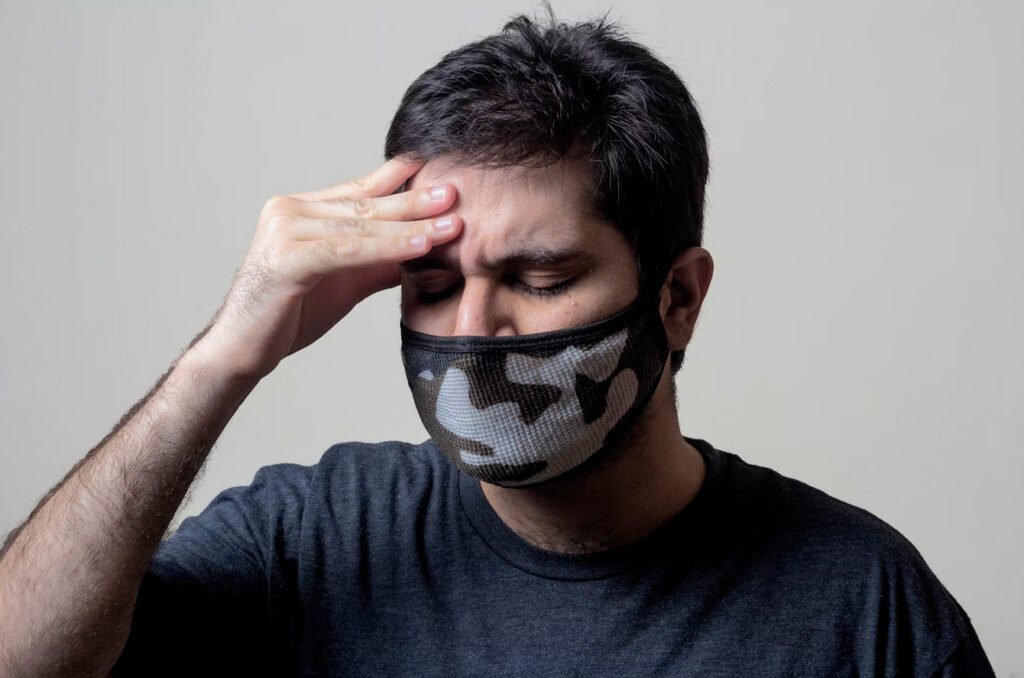
Headaches are a common ailment that can disrupt our daily lives, causing discomfort and reducing productivity. They can be triggered by various factors, including environmental conditions, lifestyle habits, and even certain foods or scents. However, with some proactive steps, you can reduce the frequency and intensity of headaches.
Here are ten tips for preventing headaches that can help you maintain a headache-free life.
1. Avoid Direct Sunlight During Peak Hours
One of the primary causes of headaches, especially in the summer, is exposure to direct sunlight. The sun’s rays are most intense between 7 a.m. and 4 p.m., and looking directly at the sun during these hours can strain your eyes, leading to headaches.
It’s essential to shield your eyes whenever you’re outside during these peak hours. Sunglasses are a great way to protect your eyes from harmful ultraviolet (UV) rays, which can cause eye strain and headaches. If you’re driving, make sure your car’s sun visor is down or use polarized sunglasses to minimize glare.
2. Use Sunglasses to Protect Your Eyes
Sunglasses are not just a fashion accessory; they are a critical tool for eye protection. Prolonged exposure to the sun without adequate eye protection can lead to headaches due to the strain placed on the eyes.
When outdoors, especially during summer, always wear sunglasses that offer UV protection. These glasses filter out harmful rays, reducing the risk of headaches and protecting your eyes from long-term damage. The sun’s UV rays are not only harmful to the skin but also to the eyes, leading to conditions that may trigger headaches.
3. Limit Continuous Computer Use
In today’s digital age, many of us spend hours in front of a computer screen, whether for work, study, or entertainment. However, extended periods of screen time can cause digital eye strain, leading to headaches.
To prevent this, try not to work continuously on your computer for more than 30 minutes at a time. Take regular breaks by looking away from the screen, blinking frequently, or practicing the 20-20-20 rule: every 20 minutes, look at something 20 feet away for at least 20 seconds. This helps reduce eye strain and prevent headaches.
4. Recognize and Manage Eye Strain
Your eyes are highly sensitive and can easily become strained, especially if you’re working in poor lighting conditions, staring at a screen, or reading for long periods. Eye strain often manifests as tired eyes, watering, or the need to squint to see clearly.
If you notice these symptoms, it’s time to take a break. Close your eyes for a few minutes or focus on a distant object to relax your eye muscles. Regular breaks and proper lighting can significantly reduce the chances of developing a headache.
5. Watch Television in the Correct Position
The way you watch television can also impact your likelihood of developing headaches. Watching TV while lying down or sitting too close to the screen can strain your eyes and lead to headaches.
The best position for watching television is sitting upright, with your eyes level with the screen. Additionally, ensure that you’re sitting at a reasonable distance from the TV—at least five feet away—so that your eyes can focus easily on the images without straining.
6. Maintain a Safe Distance from Screens
Whether it’s a computer monitor, television, or smartphone, maintaining an appropriate distance from screens is crucial for preventing eye strain and subsequent headaches.
When your eyes are too close to the screen, they work harder to focus, which can lead to fatigue and headaches. The ideal distance from a TV screen is about five feet or more, depending on the size of the screen. For computer monitors, try to sit at least an arm’s length away. Adjust the brightness and contrast settings on your screens to a comfortable level to further reduce strain.
7. Blink Frequently While Using Computers
When working on a computer, it’s easy to become so focused that you forget to blink. Blinking is essential because it keeps your eyes moist and prevents dryness and irritation, which can lead to headaches.
Make a conscious effort to blink more frequently, especially during tasks that require intense concentration, like playing video games or working on detailed projects. This simple habit can help prevent digital eye strain and reduce the risk of headaches.
8. Practice Breathing Exercises
Breathing exercises are a simple yet effective way to manage stress and prevent headaches. Stress is a common trigger for tension headaches, and practicing deep breathing can help you relax and release built-up tension.
Moreover, deep breathing helps oxygenate your brain and body, flushing out toxins that could otherwise contribute to headaches. Try incorporating breathing exercises into your daily routine, especially during moments of stress or after spending long periods in front of a screen.
9. Use an Appropriate Pillow
The quality of your sleep plays a significant role in headache prevention, and using the right pillow can make all the difference. A pillow that is too thick or too thin can strain your neck muscles, leading to stiffness and headaches.
The ideal pillow should support your head and neck in a neutral position, keeping your spine aligned while you sleep. If you wake up with headaches or neck pain, it might be worth trying a different pillow to see if it alleviates the problem.
10. Identify and Avoid Allergens
Allergies are another common trigger for headaches. Certain allergens, such as pollen, dust mites, or specific foods, can cause allergic reactions that lead to headaches. If you frequently suffer from headaches, try to identify any potential allergens in your environment.
Keep a headache diary to track your symptoms and any possible triggers. Once you identify an allergen, take steps to avoid exposure, such as using air purifiers, avoiding certain foods, or using allergy medications as prescribed by your doctor.
Conclusion
Preventing headaches requires a combination of good habits and proactive measures. By following these ten tips, you can significantly reduce the frequency and intensity of headaches in your life. Whether it’s protecting your eyes from the sun, managing screen time, or identifying allergens, small changes can have a big impact on your overall well-being.
Remember, if headaches persist despite these measures, it’s essential to consult a healthcare professional to rule out any underlying conditions.









This Post Has One Comment